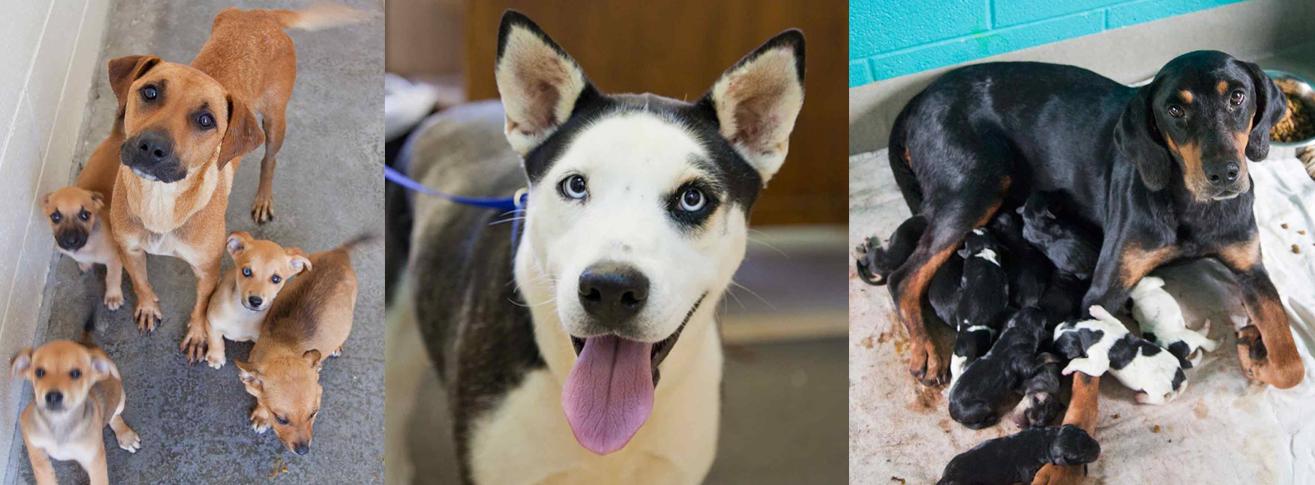How to Find Your Lost Pet
If you’ve lost your pet, don’t waste any time. Begin your search as soon as you notice that the animal is missing. Here are some steps to take:
- Ask everyone: neighbors, children, mail carriers, passersby. Show them a photo of your pet. Even if they have not seen him, they may be willing to keep an eye out for him.
- Create a flyer with your pet’s photo, a brief description and your phone number. Distribute the flyers and post them on telephone poles in the area where you lost your pet. If you can afford it, you might consider offering a reward.
- Put a “lost pet” ad in the local newspapers. The ad should be titled “Lost Cat” or “Lost Dog” and should include your phone number, the date that the animal was lost, where she was last seen, and a clear, brief description containing the animal’s name, breed, color, sex, age, and whether she was wearing a collar. (Note: If you’re offering a reward, you might want to leave out one detail, such as gender, in order to avoid scam artists.)
- Go to all the shelters in the area – don’t just call them. Give them a color photo of your pet with your phone number on it. Ask to see all the animals in the shelter and visit every cage.
- Go back and check all the shelters every day. Shelter employees are often very busy, so you can’t depend on someone remembering that an animal like yours was brought in.
- Call the local animal control officer in all the surrounding towns. Send each a photo and visit the town pounds daily.
- Call area veterinary clinics and send them a photo of your pet. Ask each of them if any animal fitting your pet’s description has been brought in.
- If you suspect that your pet may have been stolen, report your pet missing to the police. They may know if an animal fitting your pet’s description has been hit by a car (or they may be able to direct you to the department that handles this).
- Read the “pet found” section in each of the local newspapers daily. Many papers run “found” ads for free. Follow up on any ad that describes an animal similar to yours, since you can’t count on the finder to describe your pet exactly as you would.
- Look around your neighborhood carefully (or wherever your pet was lost). Cats can wander into a neighbor’s basement or garage, fall asleep and accidentally get shut in.
- Late at night or very early in the morning, when the area is quiet, go to the place where your pet was lost. Bring his favorite food and a flashlight. Call his name and wait to see if he shows up. Try this repeatedly.
- If your pet is an indoor cat who does not usually get out, place her litter box outside, where she may smell her own scent and recognize her home. (Do not clean it out first.)
- If your pet is registered with a lost-pet network organization, call them right away.
- If you are so inclined, you might try the help of a pet psychic or animal communicator. Make sure you use someone who is well-known and reputable.
Creating a flyer
One of the best aids in your search is a good flyer that you can post throughout your neighborhood. Be sure that it includes a good photo of your pet and a thorough description. Paste the flyers to fluorescent poster board, and write “LOST PET” in large black letters at the top. If your pet was lost in an area other than your neighborhood, post the flyers in the area where your pet was lost, as well as the area around your home, since animals often find their way back to their home neighborhood.
A free, easy-to-use flyer-maker program is available at www.petbond.com. This program allows you to enter information about the animal, insert a photo and print the flyer, which you can then post at local businesses and other places in your community. Additional suggestions on how to write effective flyers and where to post them are available at Missing Pet Partnership.
Posting messages online
In addition, you might want to post a message about your lost pet on these websites:
Pets Missing in Action
Hugs for Homeless Animals
A word of caution: While posting online is an excellent way to advertise lost and found pets, some pet websites and Internet community boards have been used by people attempting to commit fraudulent transactions, so investigate closely all responses you receive from online posting. You may want to set up a separate email address to use just for the “lost pet” posting. Additional information can be found in the article Avoiding Pet Scams.
Missing Pet Partnership
You might also find some helpful advice on the website of Missing Pet Partnership, a nonprofit dedicated to reuniting lost companion animals with their owners. Missing Pet Partnership has done quite a bit of research into how animals behave when they are separated from their homes, and they have discovered that not all lost pet incidents are the same.
The organization has identified the three most common reasons why pets become separated from their families: opportunistic journey, wanderlust and blind panic. They’ve also identified six major factors that influence the distances that a lost pet will travel: temperament, circumstances, weather, terrain, appearance and population density. For more details on how these factors may have influenced your pet’s behavior, check out Recovery Tips: Lost Dog Behavior and Recovery Tips: Lost Cat Behavior.
The organization also developed a method of predicting lost cat behavior based on the temperament of an individual cat. For example, gregarious cats(the kind that run to the door to greet a stranger) might initially hide once they find themselves outdoors, but then they will most likely travel.
Keep looking!
Remember, pets can be amazingly resilient and resourceful, so don’t stop looking: We have heard stories of pets being found long after their disappearance. If your pet is frightened, he/she may find a safe place to hide and stay there for several days before venturing out. In addition, it’s quite common for people to pick up pets and assume that they are strays rather than lost pets. Make sure you are not only posting “lost pet” flyers, but also checking any “found” or “for adoption” flyers you come across.
Don’t give up! Persistence is often the key to finding a lost pet. Some animals have been found after months of being missing.
Note: If you have a lost or found animal please email contact information, a picture, and a description to info@spcamhc.org so the SPCA can post these animals on our Lost & Found Page.

